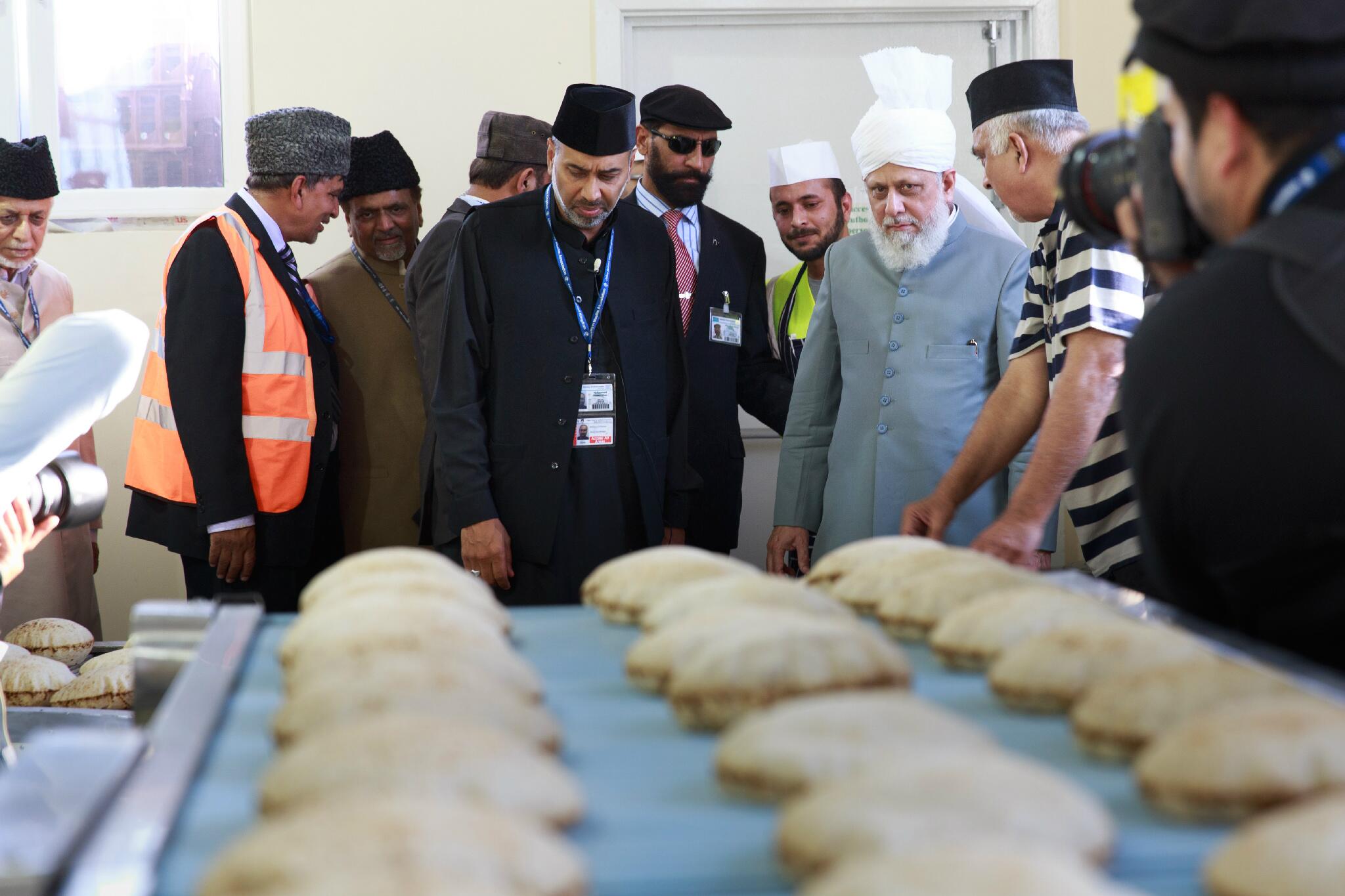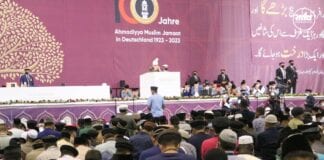
By Ehtesham Ahmad Arif
The remote village of Qadian, India hosted its first Jalsa Salana in 1891, with a total attendance around 70 people. These guests were accommodated within the household of the Promised Messiah (as) and catered by Hazrat Ummul Momineen (mother of the believers) (ra).
The stew and roti (eastern flat bread) were all prepared and cooked by Hazrat Amma Jaan (ra). Since this humble beginning, we have seen that the kitchen of the Promised Messiah (as), as prophesied, has expanded immensely. To cater for the thousands of guests, innovative resources have been used – one being a roti producing plant.
A plant has been installed within Hadeeqatul Mahdi in the same manner and pattern as Qadian and Rabwah. A barn has been converted into a bakery within ten weeks by a team of engineers and electricians – all being volunteers.
The designing of the lights, extraction fans and windows was all carried out by the engineers and this all complies by the regulation of the authorities.
The first stage to making the roti is the mixing of the dough. 64kg of flour, 38 litres of water, yeast, oil, sugar, and salt, are mixed together and kneaded by a machine.
The second step is the making of dough balls; dough is put into the divider hopper; the rotating screws push it forward and there are three outlets from which the balls come out. The cutting blades chop the extruding dough into balls of desired weight. The weight is set by sensors and can be adjusted between 40 to 150 grams. These balls then travel through a resting area before being pressed into the shape of round roti.
For the formation of round roti, the three balls from the divider enter into an area called the flattener. First the balls are pressed under the first pressing area where they take the shape of an oval roti; this oval roti is then pushed under a second pressing area where this oval roti is pressed in the other direction where it becomes round and flat.
This unbaked, round roti now travels forward through conveyers into the oven. The oven has a temperature of around 500 degrees Celsius. The roti moves onto a conveyer belt where the bottom of the roti is baked, and simultaneously – because of high temperatures – the surface of the top is also baked. It takes around seven to nine seconds in the oven for the roti to be baked.
Cooling of the roti, once it comes out of the oven, is done on cooling conveyers before they are packed. The maximum speed during production can be around 9,000 + rotis on a weight of 65 grams. During the three days of Jalsa Salana UK, some 150,000 rotis are produced each day.
Hazrat Khalifatul-Masih V (aba) stated:
“A new department of ‘roti plant’ has been established in Hadeeqatul Mahdi; during its installation, volunteers, technicians and engineers worked tirelessly night and day to get it up and running, as I stated in the [Friday] sermon.” –
(Address of Hazrat Khalifatul-Masih V (aba) at the inspection and inauguration of Jalsa Salana 2013)
